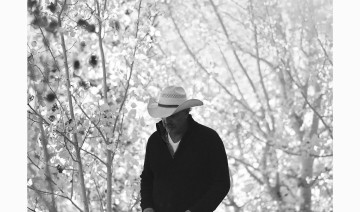
Building Babay Better
September 12, 2012
 Since the 2010 earthquake in Haiti, Hope Force International has been committed to serving the rural village of Sous Savanne. In addition to initial disaster relief services and medical initiatives, HFI has stayed involved through the ongoing Child Sponsorship Program and the "Houses of Hope" project, which aims to build 18 homes by the end of the year.
Since the 2010 earthquake in Haiti, Hope Force International has been committed to serving the rural village of Sous Savanne. In addition to initial disaster relief services and medical initiatives, HFI has stayed involved through the ongoing Child Sponsorship Program and the "Houses of Hope" project, which aims to build 18 homes by the end of the year.
"Houses of Hope" is a vital part of Hope Force's work in Haiti since huge housing needs remain in many parts of Haiti, especially in the earthquake zone. Some 400,000 people still live in tent cities, but untold thousands have moved into shacks on the hillsides north of Port-au-Prince.
A few months ago, Hope Force began assessing candidates for the housing program in Sous Savanne and realized that other organizations had also built quite a few transitional shelters for families in need. Upon hearing that one of the other organizations was ending its transitional shelter program, HFI Field Team member René Lako contacted the organization to coordinate with candidates who were still on the waiting list.
"The manager told us about a village close to Sous Savanne called Babay, which had little or no relief aid since the earthquake," René said. "A list of 48 families was provided and we began to consider how to approach this opportunity. We wondered if this would this be another chance to serve the un-served and reach the un-reached."
 Babay is a rural village in the foothills of the surrounding mountains, less than two miles from Sous Savanne. It remains virtually isolated because of the rough terrain. The road out of Sous Savanne disintegrates into a muddy, rutted path, making it difficult to navigate the deep holes, rocks, and steep hills en route to Babay. Travelers must then exit their vehicles to cross a river, which serves as the main source of drinking water for villagers.
Babay is a rural village in the foothills of the surrounding mountains, less than two miles from Sous Savanne. It remains virtually isolated because of the rough terrain. The road out of Sous Savanne disintegrates into a muddy, rutted path, making it difficult to navigate the deep holes, rocks, and steep hills en route to Babay. Travelers must then exit their vehicles to cross a river, which serves as the main source of drinking water for villagers.
Across the river lies Babay, which consists of a narrow path leading to small shack clusters. These homes range from tents, to make-shift structures of sticks and tarps, to traditional homes made from deteriorated mud plaster. Most of the glissade homes have been damaged by the earthquake and heavy rains. The villagers reported serious water runoff and damages as Tropical Storm Isaac swept through the Caribbean.
With the help of the International Organization for Migration and the Adventist Development and Relief Agency, Hope Force obtained a donation of clothing, as well as 50 tarps, 50 blankets, and 10 water filters for Babay. René and the Sous Savanne community leader, Joseph, distributed the supplies to the Babay development committee.
"This is only a small relief," René said. "We're awed by the level of poverty in this isolated community. The desire has grown to reach the unreached, to be a voice for those who cannot speak up for themselves or have not been heard."
 Fortunately, many of the people in Sous Savanne and Babay already have small property plots. This means that homes can be built where the villagers feel comfortable, rather than being relocated to a new camp. Hope Force will continue efforts in Sous Savanne while also expanding the "Houses of Hope" project to the Babay area. While lacking adequate housing, Babay also remains without a school, water well, latrine, or church. As the land does not produce sufficient food to feed families throughout the year and bring in profit, employment is also a serious issue in this area. Most of the families are subsistence farmers who live on less than $2 a day.
Fortunately, many of the people in Sous Savanne and Babay already have small property plots. This means that homes can be built where the villagers feel comfortable, rather than being relocated to a new camp. Hope Force will continue efforts in Sous Savanne while also expanding the "Houses of Hope" project to the Babay area. While lacking adequate housing, Babay also remains without a school, water well, latrine, or church. As the land does not produce sufficient food to feed families throughout the year and bring in profit, employment is also a serious issue in this area. Most of the families are subsistence farmers who live on less than $2 a day.
"Above all else, we feel that the lack of safe housing is the most pressing need," René said. "A family should not live in a shack that isn't even fit for animals."
HFI has developed an efficient system whereby "Houses of Hope" are built in clusters of four homes at a time. The organization plans to split future homes between Sous Savanne and Babay, with priority being given to those on a list of the 25 most vulnerable families. Each "House of Hope" costs $5,000 to build, and latrines are an additional $1,000.
"We asked Joseph what he thought of doing something in Babay, as we continue working in Sous Savanne," René said. "He stated that Sous Savanne already had benefitted so much more, and that it was good to give back and reach out to a neighboring community. We pray for partners to help make a difference and build Babay better."





